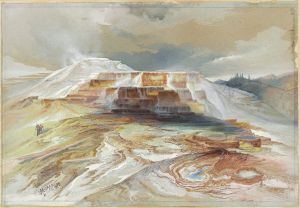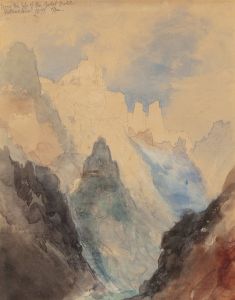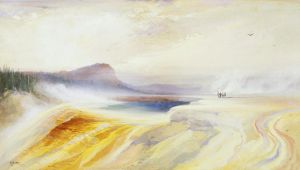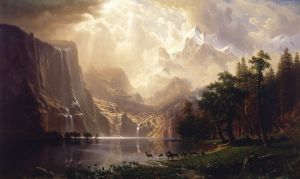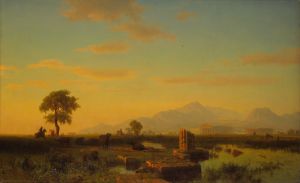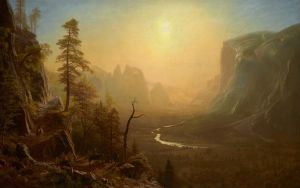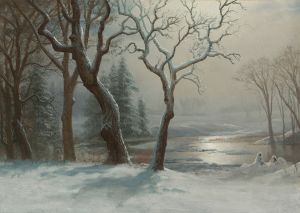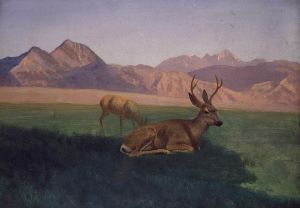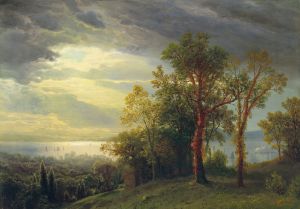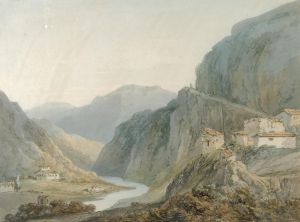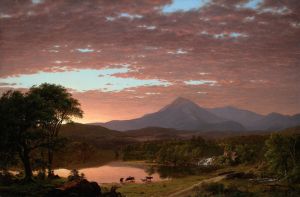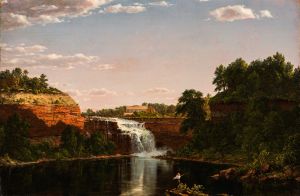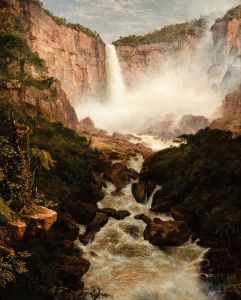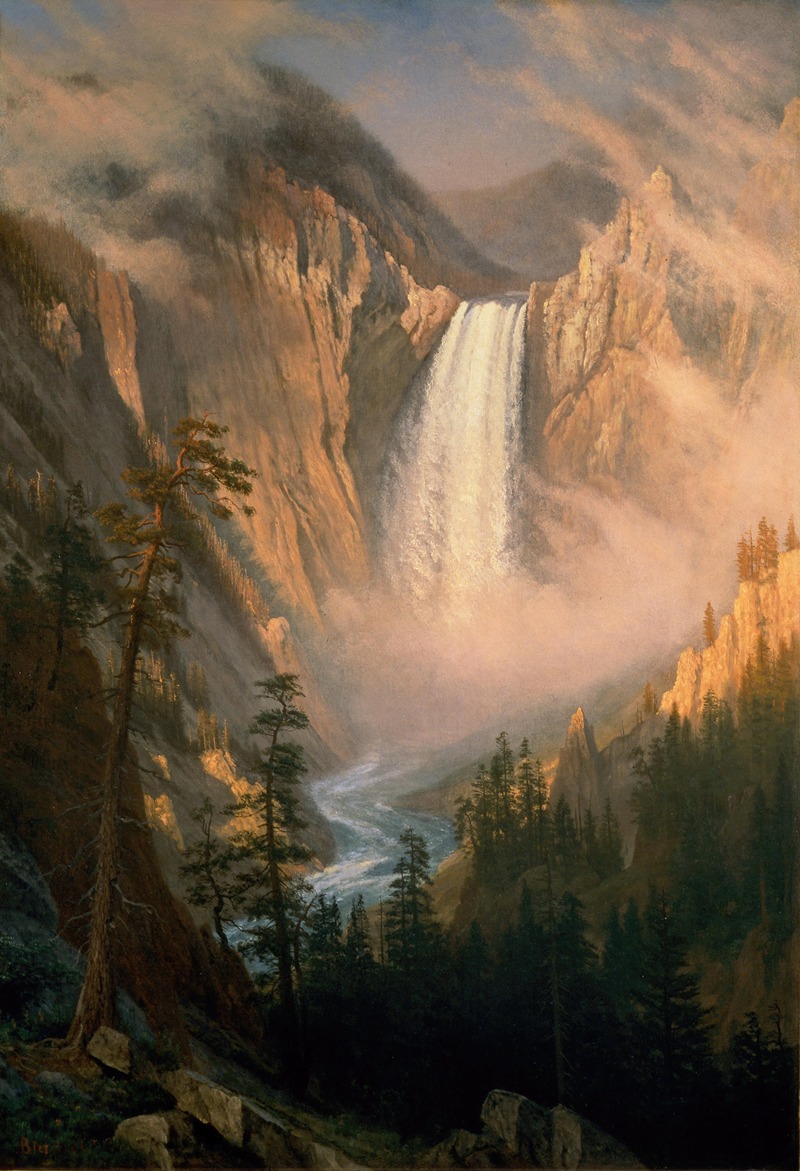
Yellowstone Falls
A hand-painted replica of Albert Bierstadt’s masterpiece Yellowstone Falls, meticulously crafted by professional artists to capture the true essence of the original. Each piece is created with museum-quality canvas and rare mineral pigments, carefully painted by experienced artists with delicate brushstrokes and rich, layered colors to perfectly recreate the texture of the original artwork. Unlike machine-printed reproductions, this hand-painted version brings the painting to life, infused with the artist’s emotions and skill in every stroke. Whether for personal collection or home decoration, it instantly elevates the artistic atmosphere of any space.
Albert Bierstadt's "Yellowstone Falls" is a notable painting that captures the grandeur of the Yellowstone region, specifically the Lower Falls of the Yellowstone River. Bierstadt, a German-American painter, was part of the Hudson River School, a mid-19th century American art movement known for its romantic portrayal of the American landscape. His work is characterized by its detailed and dramatic depictions of the natural world, often emphasizing the sublime beauty of the American West.
"Yellowstone Falls" is one of Bierstadt's many works that focus on the landscapes of the American West. The painting showcases the Lower Falls, which are a prominent feature of the Grand Canyon of the Yellowstone. This waterfall is one of the most iconic and frequently depicted natural landmarks within Yellowstone National Park. The park itself, established in 1872, was the first national park in the United States and is renowned for its geothermal features and diverse ecosystems.
Bierstadt's painting is celebrated for its meticulous attention to detail and its ability to convey the majesty and scale of the falls. The artist's use of light and shadow creates a dynamic composition that highlights the power and beauty of the cascading water. Bierstadt often employed a technique known as luminism, which emphasizes clarity of detail and a luminous quality of light, to enhance the dramatic effect of his landscapes.
The painting reflects Bierstadt's skill in capturing the interplay between light and the natural environment, a hallmark of his artistic style. His works often evoke a sense of awe and wonder, inviting viewers to appreciate the vastness and splendor of the American wilderness. "Yellowstone Falls" is no exception, as it invites viewers to experience the breathtaking beauty of one of the country's most treasured natural sites.
Bierstadt's journey to the American West was part of a larger movement during the 19th century, where artists and explorers sought to document and share the landscapes of the newly accessible frontier. These expeditions were often arduous, but they provided Bierstadt with the inspiration and material needed to create his large-scale paintings. His works played a significant role in shaping public perceptions of the American West and contributed to the growing interest in preserving these natural landscapes.
"Yellowstone Falls" is an example of how Bierstadt's art helped to promote the idea of conservation and the establishment of national parks. By capturing the beauty and grandeur of these landscapes, Bierstadt and his contemporaries helped to foster a sense of national pride and a desire to protect these areas for future generations.
In summary, Albert Bierstadt's "Yellowstone Falls" is a testament to the artist's ability to depict the sublime beauty of the American West. Through his detailed and luminous portrayal of the Lower Falls, Bierstadt invites viewers to appreciate the natural wonders of Yellowstone and the importance of preserving such landscapes. His work remains an important part of American art history and continues to inspire admiration for the country's natural heritage.





